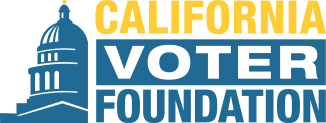Young voters in California are more likely than older voters to have their vote-by-mail ballots rejected, a September study found.
The study, which was published by the California Voter Foundation, examined trends in rejected ballots across the state. Over the last decade, election officials rejected 1.7% of vote-by-mail ballots cast in statewide elections, according to the study. However, voters between the ages of 18 and 24 had their vote-by-mail ballots rejected at about three times the rate of older voters in the three counties studied, said Kim Alexander, president and founder of the California Voter Foundation.
Young voters have several factors working against them, said Alexander, who was a co-author on the study. When it comes to casting vote-by-mail ballots, young voters are more likely to be new to voting, unaccustomed to making signatures and unfamiliar with using the United States Postal Service, she added.
Alexander said young voters’ unfamiliarity with the U.S. Postal Service may cause their ballots to be postmarked too late and be rejected.
In Sacramento County, the most common late postmark date was the day after Election Day, which means people likely put their ballots into mailboxes on Election Day after the mail had already been collected, Alexander said. Mail-in ballots have to be received by the Postal Service on or before Election Day to be counted.
“(Young voters) may not realize you need to pay attention to the fine print on the inside flap of a mailbox before you deposit something into it that you need to be postmarked by a certain date,” she said.
- - - - - - - - - -
However, Alexander said California implemented some protections to ensure fewer ballots are rejected in the 2020 election. New state laws require counties to contact voters if their signature is missing from their ballot envelope or if it doesn’t match their signature on file. Counties also have to provide those voters with a form through which they can submit their new signature so their ballot can be counted, she said.
While California has worked hard to bring down the vote-by-mail ballot rejection rate, Alexander added that the rejection rate is a stubborn problem.
Waknin said young voters who registered to vote through the DMV should look at the signature on their license to remind them of the signature they used when registering to vote.
California voters can also track their ballot at each stage and see whether their ballot has been accepted or rejected, she added.
Waknin said she thinks cities and counties also need to do a better job of encouraging young voters to vote and educating them on the voting process, particularly the vote-by-mail process.
Alexander added that given the unsubstantiated talk about vote-by-mail fraud this election, some people may look at the signature rejection problem as evidence of people signing other people’s ballots. However, she said she views the ballot rejection problem as confirmation of built-in security measures in the voting process.
Waknin also said she thinks vote-by-mail is a safe procedure because California has done a good job of implementing vote-by-mail options.
“Younger voters should just feel confident in the system and not feel disheartened,” she said. (Full Story)

